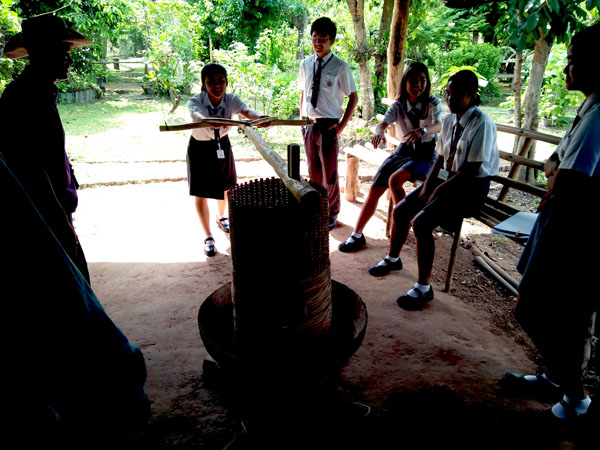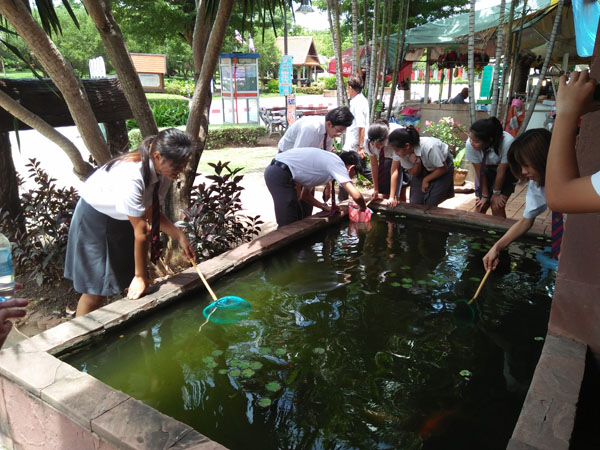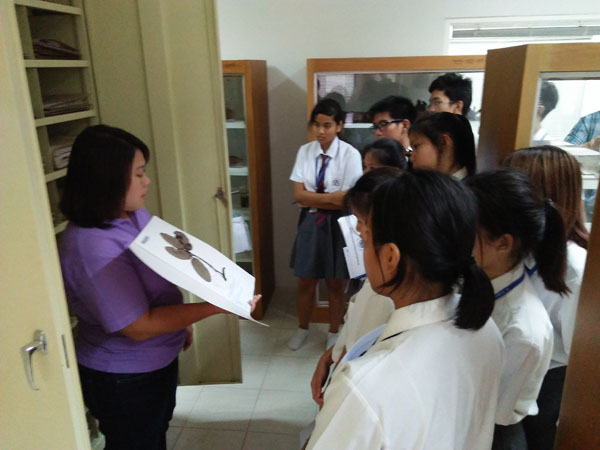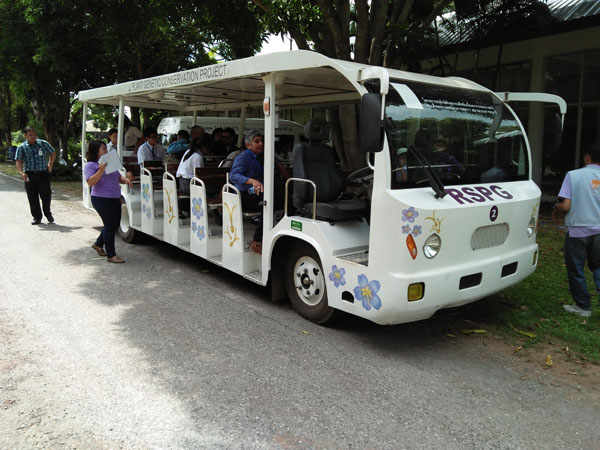On Friday 16th September all of Key Stage 4 went on a cross-curricular trip to the Plant Genetic Conservation Project at Khlong Phai. En-route they visited the Suan Tao municipal park. Here they learnt to use compasses to take bearings for Geography and maths, they measured tree circumferences to calculate cross-sectional areas of branches. For Biology they sampled the ponds to make estimations of the fish populations. At the lake they found the average shell length of the gastropod (หอยแสง) Melanoides tuberculata and the shell width of a bivalve (หอยเขาไฟ) Corbicula fluminea.
They have used this data they collected during these activities in Physics lessons back at school to practice doing calculations to work out the volume of cylinders and different conic shapes.
At the Genetic Conservation Project they learned about how the scientists classify rare plants using dichotomous keys and how they dry and preserve specimens for future reference. To conserve the genetic diversity in plants some seeds are preserved in controlled atmospheres to prevent decay. They also saw tissue culture laboratories where tissue explants are taken from many different parts of plants, including portions of shoots, leaves, stems, flowers, roots, single undifferentiated cells or from many types of mature cells. But these mature cells must have living cytoplasm and nuclei and be able to de-differentiate and resume cell division. In maths lessons Year 10 have been learning how to solve simultaneous equations so they were given a task to calculate the number of different bottles and trays on the tissue culture shelving racks.
Afterwards they were given a tour of the organic vegetable patch, orchard and botanical garden and saw rice fields growing different varieties of Thai rice. They tried using a traditional grinding wheel to mill the rice and then sort the chaff. After this thirsty work they were given refreshing tea made from different species that are grown at the project. They subsequently explored an exhibition of award winning Thai silk dying using natural dyes. For example safflower Carthamus tinctorius can be used as an alternative to the red synthetic dye fuchsin. Given the formula of this molecule the Chemistry students calculated its relative molecular mass. Indigo is a dye that changes colour during oxidation from the colourless leucoindigo and indigo in sunlight. They were finally given a demonstration of traditional silk weaving.
About twenty years ago at the end of the last century many refugees from Laos, Cambodia and Vietnam came to Thailand for safety away from the civil unrest, conflict and warfare in their own countries. There was formerly a refugee camp in this area for Vietnamese asylum seekers. This provided the Geography students an ideal insight into the pressures of push or pull that cause population movements.
Overall, it was a busy but very enriching experience with students learning lots of applications of their classroom studies for their IGCSE subjects. We are very appreciative of the generosity of the project staff who gave their commentaries and presentations using excellent English.








St. Stephen’s International School
All rights reserved